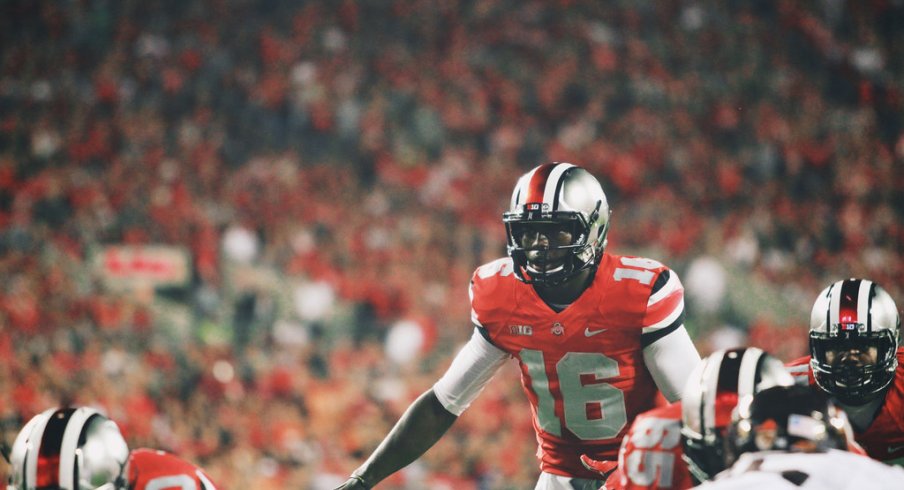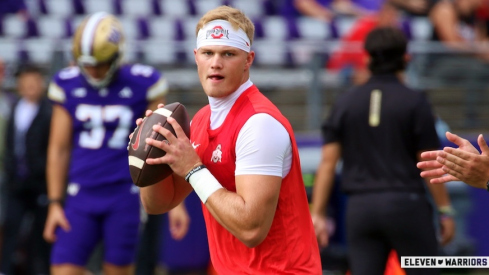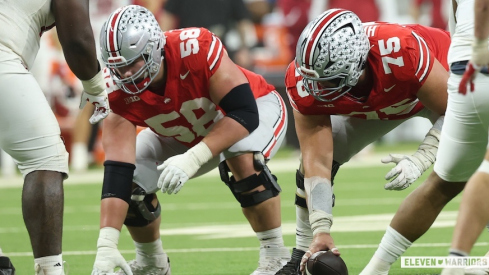Urban Meyer doesn't make excuses when his team loses a football game. This is particularly true of last year's debacle against Virginia Tech.
Meyer called his team underprepared, placing blame squarely on himself and the staff for the early-season letdown.
"Offensively right now there is a lot of distaste for the way that thing happened, and that's not taking away from their personnel, because I think they have excellent personnel, especially on defense," Meyer said, during his press conference, Monday. "A lot of it was lack of preparation. Good players that are doing a scheme that our guys were not prepared for, so there is a big edge around here."
That edge led to an increased focus on what went wrong in last season's only loss. Ever since the Hokies used a Bear front on 54 of 74 snaps against the Buckeyes, OSU responded with various schemes to combat it. Granted, Cincinnati, Maryland, Rutgers, etc. don't have the personnel to play man coverage against Ohio State all game with so many players lined up in the box. Still, it gave them a blueprint of how to attack what Virginia Tech threw at them last year, and what they might use again.
As our Kyle Jones explained this morning, Herman and Meyer's added wrinkles against the run – the tackle counter – and pass – a flare screen, as examples. It really opened up the playbook on third down, especially, with more short-yardage situations. The Bear front no longer forced the Buckeyes into low-percentage first-down conversion attempts.
On third down, Virginia Tech feasted on J.T. Barrett's inexperience and Ohio State's inability to move the ball downfield. In one respect, it was a flawed plan to force the wide receivers to run longer routes while Barrett was under constant pressure. The Hokies brought too many defenders for the offensive line to handle. At the same time, some of the third-and-long situations dictated that Barrett wait for those routes to develop.
All three of Barrett's interceptions came against what JameLightFootball.com refers to as "Cover 1 Rat." In this alignment, one safety covers the deep third, a second safety lines up underneath him and the linebacker who isn't responsible for the running back acts as a spy. The final interception, the pick-six sealing Virginia Tech's victory, is an example:
If Ohio State continues to see that type of coverage in obvious passing situations, Barrett will have to deliver catchable passes to wide receivers who will also have to do a better job of winning one-on-one battles. In the above instance, Barrett needed to be on the same page as Corey Smith, as he expected Smith to come back to the ball. The other two interceptions were not great decisions by Barrett, but the receivers also didn't break free against press coverage.
Michael Thomas has the best hands on the team and will be relied upon in short-to-intermediate routes if the Hokies run "cover-0" or "cover-1" and stack the box. Ohio State can deliver it to him via quick slants or bubble screens. Thomas faces his toughest collegiate challenge yet, however, as he'll likely match up with Preseason All-American corner Kendall Fuller.
With such a talented secondary, led by Fuller, defensive coordinator Bud Foster can implement coverage similar to that of the Seattle Seahawks, as he has done in the past. It makes it easier to generate more pressure on the quarterback.
"I think in the secondary we have some guys, (Brandon) Facyson, (Kendall) Fuller, (Chuck) Clark and (Desmond) Frye, guys that have some height to them, but they're smart guys and they're good football players," head coach Frank Beamer said, during this week's ACC Teleconference. "On the back end, having those guys is really, really helpful. When you can do some things with them, it kind of turns your front loose a little bit. I think those guys are key for us."
Beyond Thomas, the Buckeyes don't have a proven downfield threat available for the Virginia Tech game. Jalin Marshall, Braxton Miller and Curtis Samuel are electric in open space, but Miller and Samuel are particularly limited in terms of their ability to stretch the field vertically. Devin Smith's graduation also does not help in that regard.
Expect the Hokies to be blitz heavy because of that, particularly if Barrett is the starting quarterback. As Pro Football Focus points out, Barrett's completion percentage drops from 69.8 percent without pressure to 44.1 percent when he's under pressure.
Whether the game plan mirrors last year's or if Foster surprises the Buckeyes again, no one on Virginia Tech's staff is playing their hand.
"We don’t want to make it real easy for them," defensive backs coach Torrian Gray said, via the Roanoke Times. "We may play more zone. We could be very dangerous and play a lot more man. But you’ve got to kind of mix it up a little bit. You can only live on the edge so much before it hurts you."


